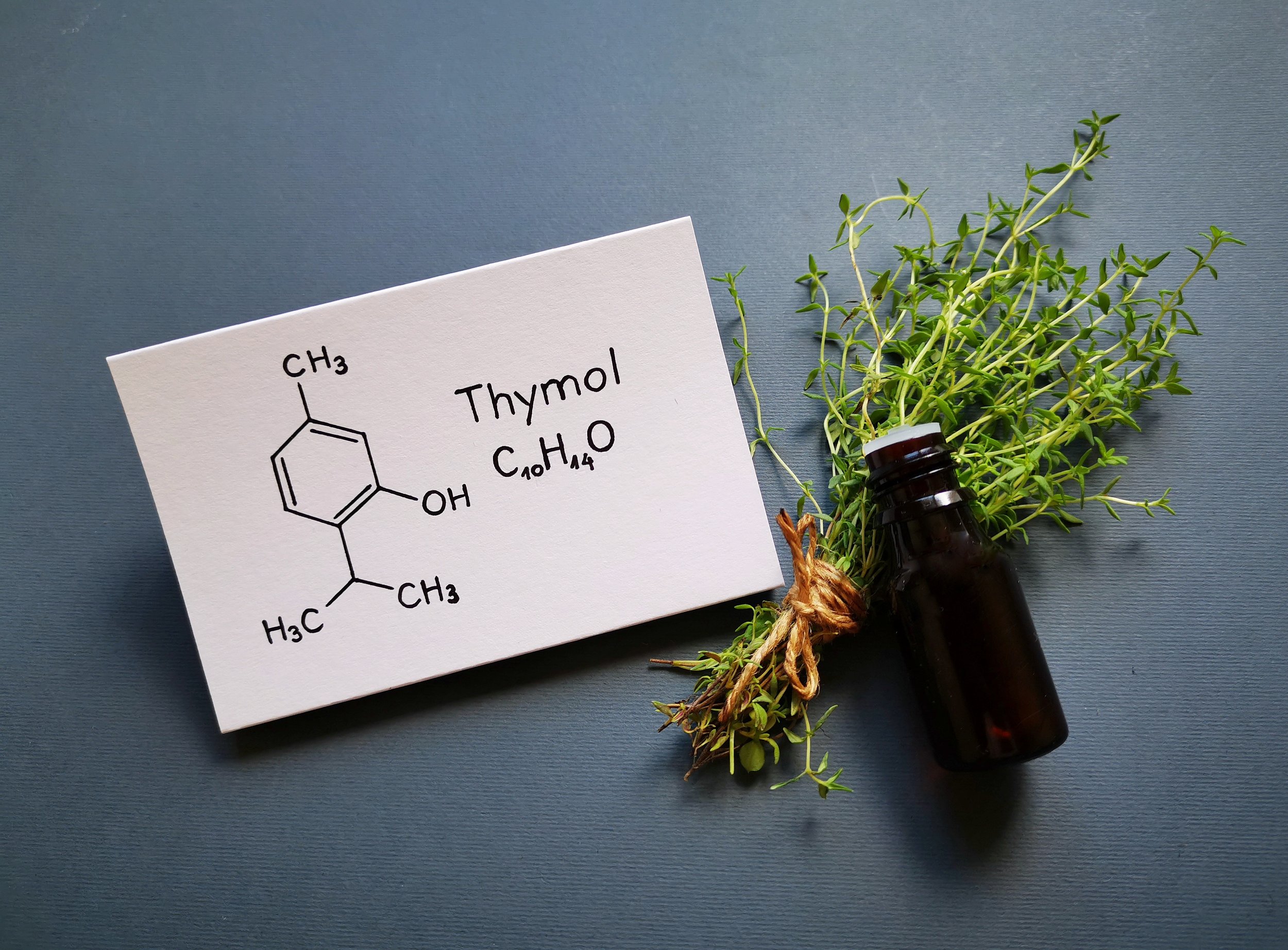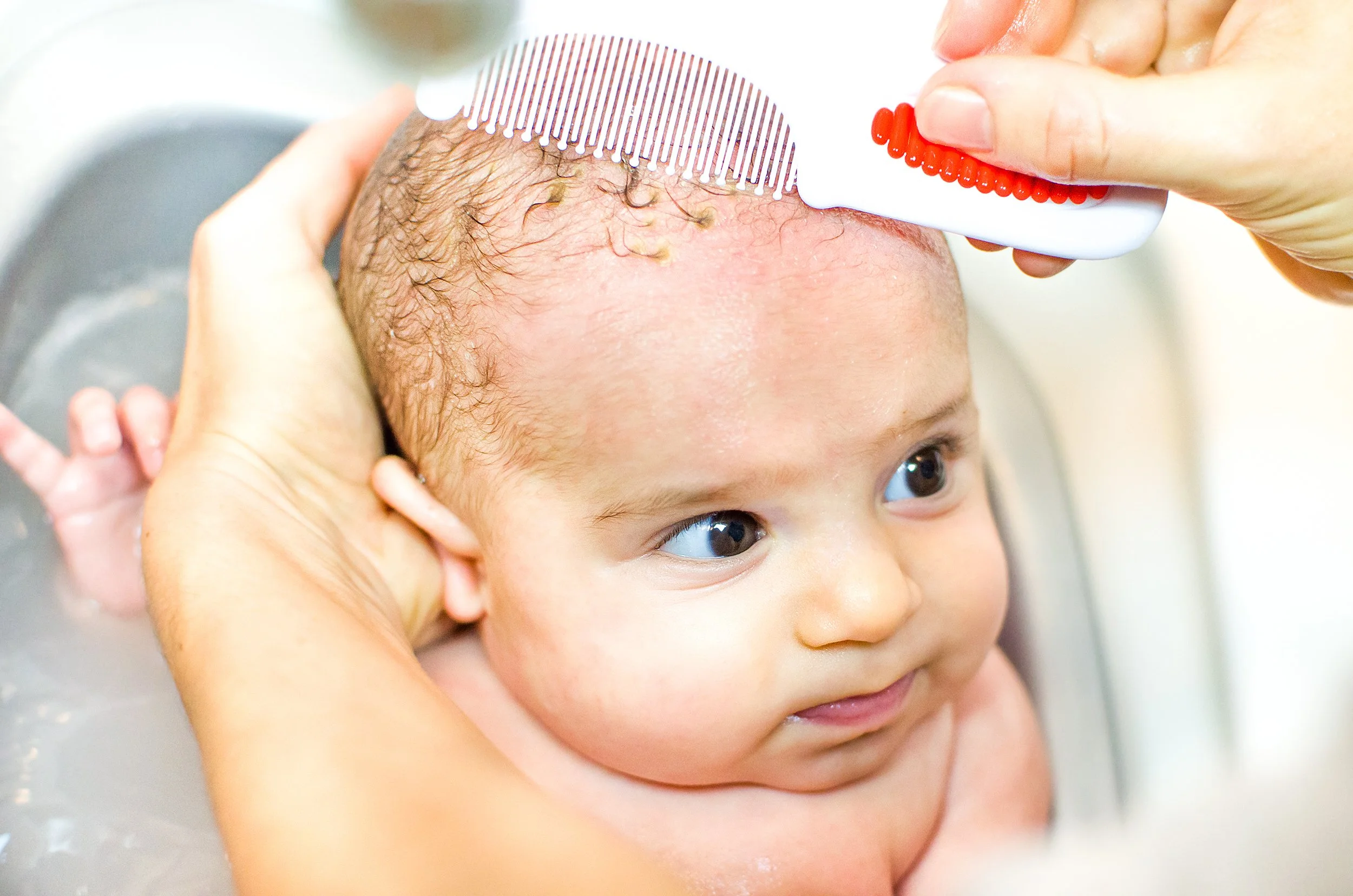Safe Essential Oils for Infants and Toddlers: What Essential Oils to Choose, Avoid, and How to Use Them
Essential oils are relatively safe for use on infants and toddlers. Relatively being a key word here. There are definitely cautions, essential oils to avoid (peppermint being an important one), and knowledge of dilution.
Keep in mind the fact that children are small, so use small amounts of essential oil (how obvious is that?). Meaning 1 drop in 30 mLs of a carrier, like jojoba, is more than enough.
Consider developmental stages
Think about development. Infants to toddlers are still in an extreme stage of development, such as the respiratory system, digestive system, nervous system, and the lipid barrier that protects the absorption of foreign matter and pathogens (virus and bacteria) into the body through the skin.
To the young inexperienced body, essential oils are foreign matter and may cause reactions if absorbed through the under-protected skin, so, topical use seems like a bad idea. Inhaling the oils through diffusion would carry exposure to under-developed lungs. Internal (you wouldn’t) travels through still forming mucous membranes, stomach and liver. The conclusion would be, no inhalation, no ingesting and no rubbing on the skin for babies. What’s left? Nothing. Don’t use essential oils, unless you don’t mind the potential harm they may cause.
Or . . .
use them knowing these conditions and make reasonable, responsible choices based on the development of the child.
Just use them responsibly
From our therapeutic knowledge of essential oils it would seem they would be ideal during early development to protect the infant’s body. A reminder, essential oils are foreign matter and are not natural (as they occur in nature) or as applied to a developing child. Hold up! Am I for or against the use of essential oils on babies?
Let me just fine tune my message here. Nobody has killed or irreversibly harmed their baby - that we know of. Most adverse reactions are from contact dermatitis and similar inflammatory reactions to the skin, which can be quite dangerous in the extreme. These were mainly from an undiluted (neat) or high dilution use of the essential oil or blend. With that and other cautions in mind, essential oils are an excellent remedy for babies when used with knowledge and responsibility.
You’re going to put what on me??
The peppermint issue
The essential oils, in the way I’m discussing them here, are not lethal or poisonous. Except for peppermint, which has caused ER visits and death, though deaths are attributed to the use of high menthol containing vapo-rubs. Menthol is the main compound in peppermint, and due to its affect on the cold nerve endings, will compromise lung function. Menthol also lowers body temperature, which may be hazardous to a child. We know and understand that essential oils work from a complex synergistic compound (chemical) structure, and when the compounds are isolated from the whole oil, like menthol from peppermint, there can be toxic results not found in, and more aggressive than, the whole oil.
What we don’t know
My concern is the unknown activity of the oils that do, even as a whole oil, affect the nervous, endocrine (hormonal), digestive, and respiratory systems. Why mess with the unknowns that could negatively influence developmental growth which may not show up for months or years, and appear unrelated to the use of essential oils?
Essential oils are nature - did I just contradict myself? Not really, I previously said they aren’t “natural.” The emphasis here is that essential oils, in their concentrated form, extracted from nature (plants), need to be understood and used as they would occur naturally. Man, I am so freakin’ confusing! Isn’t occurring naturally natural? Whatever, let’s move on and I’ll explain. Occurring naturally, in our discussion, puts a focus on dilution, bringing them more in line with the lower concentrations as they are in the plant source.
Essential oils are derived from foods and many foods are not tolerated well with babies and toddlers.
Think about essential oils from the source they are derived. There are many foods, including all solids when new-born, that are not tolerated well with babies and toddlers. Relate that to essential oils and we can assume there are some that are not well tolerated similar to the foods or herbs. Infant bodies just aren’t ready for these naturally occurring compounds yet. Peppermint being the best example.
Getting beyond the drug-culture mentality
The drug-culture mentality has infiltrated the use of essential oils
Drugs have been marketed and sold using a drug-culture protocol that makes the use of pharmaceuticals seem like a normal everyday solution to illness and discomfort. They even make baby pharmaceuticals. Start them young and they’re customers for life.
For those looking for safe, “natural,” alternatives to pharmaceuticals, the use of essential oils has become a replacement to the drugs sold by the pharmaceutical industry. The problem is that the drug-culture mentality has infiltrated the use of essential oils, mimicking the over-use of drugs and their symptom-only application. Essential oils are not drugs. Don’t use them under the same protocols as drugs. That includes ingesting. They aren’t that kind of medicine. Remember what I said already about mucous membranes, stomach and the liver?
Drug-mentality is a big issue leading to inappropriate and wasteful use of essential oils. It also misses the holistic value of essential oils, which treat beyond the symptoms. Treat the person with the symptom, not just the symptom. This goes for anyone, infant to adult. That means a good analysis of the situation and finding the root causes of the symptoms that may appear.
Why is this happening?
If the infant is upset due to environment, laundry detergent, noise or similar, a calming essential oil won’t do anything. Make connected changes, then use the oil. A digestive issue, if still breast feeding, could be due to what you ate. Yes, diffusing barely-detectable ginger (not peppermint) into the atmosphere will help, though is not the solution if it’s your diet that needs to change.
Let’s work from birth to 30 months, which is the age that the lungs are developed enough to use peppermint (have I used peppermint enough times as an example of thought-to-be-safe but isn’t?). Working from that age range we can safely say avoid most essential oils from birth to a few months old. You can diffuse them as long as the visible mist doesn’t drop in their physical space and it’s not used in a closed room with the diffuser running. You should barely detect the fragrance when entering the room.
On the baby’s body
Topically, for conditions such as cradle-cap or skin irritation, you can use jojoba oil or shea butter, no need for essential oils. At 2 to 3 months you can start adding essential oils. The topical dilution for this age range is 0.1 - 0.2%, that’s one to two drops per 30 mL. That’s a pretty good naturally, as-in-nature, dilution. In some cases, a topical application may begin at 1 month old.
Some symptom based essential oils, with good holistic properties, used topically and safe for infants in the first 3 months are:
German chamomile (Matricaria recutita) - inflammation, skin irritation and cradle cap
Sandalwood (Santalum album or Santalum spicatum) - inflammation and skin conditioning. Also soothing and calming.
Copaiba (Copaifera officinalis) - Inflammation and skin conditioning
Myrrh (Commiphora myrrha) - inflammation, skin protection, respiratory support
Atlas Cedarwood (Cedrus atlantica)- anti-inflammatory, skin conditioning, respiratory support
Monarda fistulosa (also called bee balm or wild bergamot) - ear infection, anti-inflammatory, lung support
This list of oils would also have some antibacterial, anti-fungal and antiviral properties.
Diffusing and inhalation for babies
When diffusing essential oils for babies you’ll want to avoid peppermint for the first 30 months. This is due to peppermint’s, specifically menthol, affect on the cold nerve endings, which will compromise lung function. Oils containing 1,8-cineole, the oxide, also may be too aggressive for young lungs. These include eucalyptus radiata, eucalyptus globulus, eucalyptus smithii, rosemary cineole type, bay laurel, and niaouli cineole type. It is safe to use these oils, though the concentration should be at what I had previously stated, low level of detection, avoiding the visible mist falling into the baby’s physical space. These oils may be used topically at 0.1% (1 drop per 30 mL) in a carrier and massaged on the feet. This is the recommended topical dilution up to 3 months for essential oils with higher amounts of 1,8-cineole.
Essential oils for diffusing at low level of detection include:
Frankincense (Boswellia carteri) - lung support, anti-inflammatory, anti-parasitic
Cape chamomile (Eriocephalus punctulatus) - soothing, calming, anti-inflammatory
Lavender (Lavandula angustifolia) - general use
Tea tree (Melaleuca alternifolia) - general use, especially good for infection and lung support
Geranium (Pelargonium graveolens) - general use
Atlas cedarwood (Cedrus atlantica) - general use
Monarda (Monarda fistulosa) - general use
Conclusion: Use essential oils
Let me conclude by emphasizing that essential oils are safe for babies. Use them. Follow the cautions and understanding I’ve presented here and you will likely have no problems, meaning no negative side-effects, from your use of essential oils. Using more essential oil than stated above on infants may increase the potential for side-effects, with consideration that sort-term danger to the child is rare and long-term with aggressive use may have unknown consequences.
Drug-culture mentality is disruptive to a healthy application of essential oils. More is not better or more effective, and there’s more to the use of essential oils than symptom management. If using essential oils medically there are specific dose amounts that are demonstrated to be the most effective levels. This is an area that requires further study, that I highly recommend, as it will be useful for life-long health and wellness for you, your children and anyone you decide to support with essential oil use.






